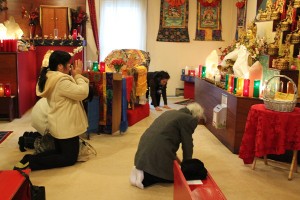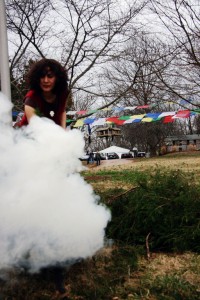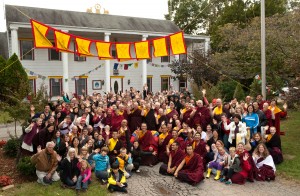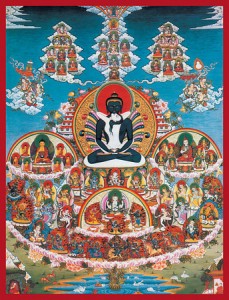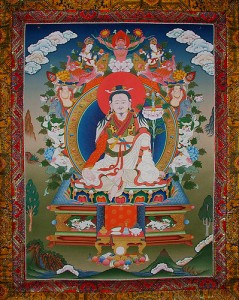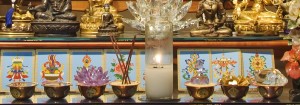The following is a message recorded on June 1, 2013 as a message from Jetsunma Ahkon Lhamo to her students (audio file below):
This really has been the hardest time of our lives as a sangha, because we don’t know what the future is going to be. We don’t know whether we will stay together.
A sangha is a precious thing. It has to stay together. It’s like a family. When it is broken something precious is lost. It is tragic.
I just want to speak to my sangha, because right now we don’t have a building that we can use the way we normally would, but I want to remind you that we still have the land. So, don’t abandon it. We are coming back online pretty darn soon. Not soon tomorrow, not even soon next year, but soon. And it will be progressively better and better and better. So don’t give up. I haven’t. I would live in a tent if I had to, as long as I had a fence for my dogs.
I just want to say that we have to make this the best effort of our lives. We cannot say, “Oh I pay this much every month, and so I shouldn’t have to pay any more.” Or I pay this much every year, or whatever. You can’t say that and think that’s enough. It’s not. Not right now. That was enough before, and we counted on you. If you didn’t help us in the way that we’d agreed on way back in the past, then we wouldn’t have anything.
This was a group of people that stuck together for a long time; learned to love each other. Then of course because they are sentient beings, they learned to argue with each other. And as usual, we don’t even realize that we are doing it.
I hope to get your attention. I have had a hard time getting your attention lately. It is like trying to herd cats. And of course we all know that is impossible, because cats are cats. Could you not be a cat for a while, and learn how to work for the larger group, for the group of sentient beings that we are and the group of sentient beings that we serve? To work for all sentient beings ultimately. If we could just get back there, everything would come back. It is cause and effect.
We have been too selfish. I have broken it up the best I could by just giving everything away. Have you noticed? Many of you don’t even know. I hope you will pay attention. I hope you will wake up.
I am glad that people are having weddings and family things. I’m glad for all of you. I don’t have any of those things in my life at this point, but I am glad for all of you.
At this part of my life I feel like I have got to keep moving forward or it’s all on me. The truth of the matter is that no one person can do it, and it’s not all on me. So you have to help me figure this out. I am actually working hard every day. Not just sitting here trying to think it out. But talking to people who might be able to help us. So help me. I have helped you over the years. Why can’t you help me? Amen.
I hope you hear me. We were made to do this. I hope you hear me. We were born to do this, and it is hard, but I hope you hear me.
You can hear the message here: Messsage From Jetsunna
Copyright © Jetsunma Ahkon Norbu Lhamo All rights reserved
